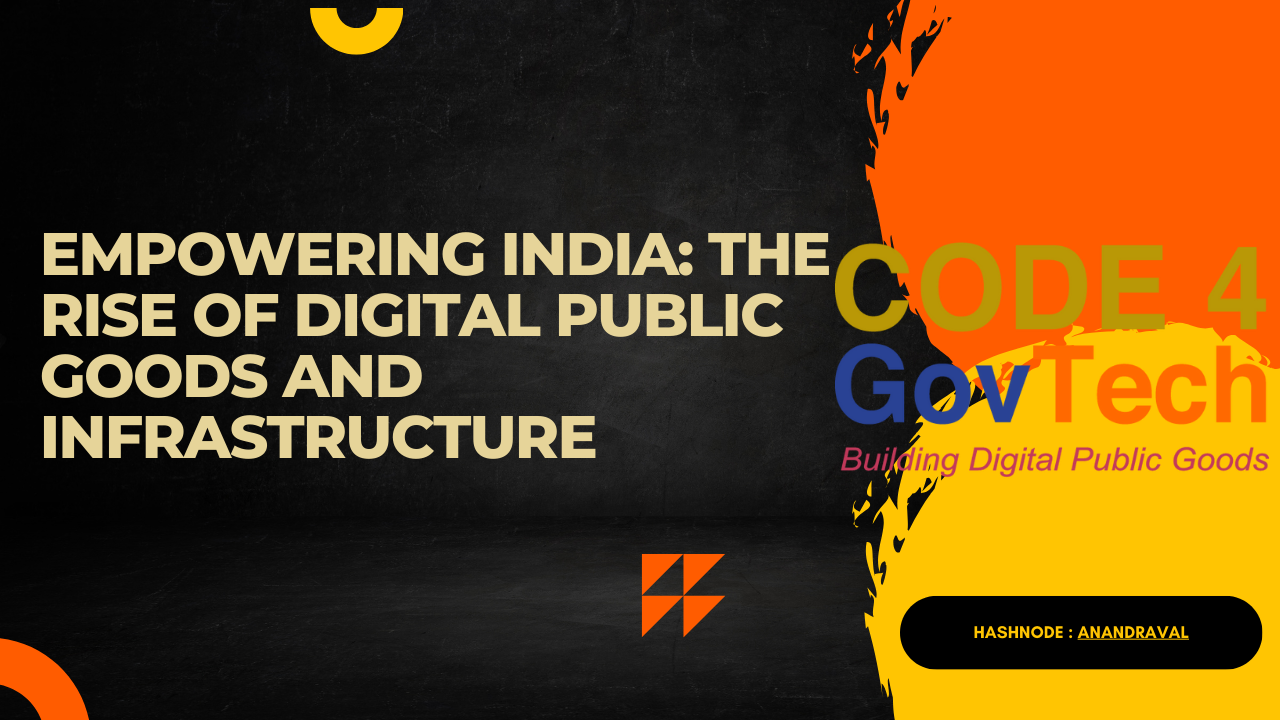Empowering India: The Rise of Digital Public Goods and Infrastructure
 Anand Raval
Anand Raval
What are Digital Public Goods?
Due to the COVID-19 pandemic, accessing public goods became challenging, leading to the rise of digital public goods. Examples of digital public goods include open-source software, open data, open AI/ML models, open standards, and open content.
For instance, systems like Aadhaar, BHIM UPI, CoWIN, and GSTN were already in use before the pandemic, but their utilization increased significantly during this period. These digital solutions were crucial for India during the pandemic and have the potential to contribute significantly to the country's future.
Digital public goods can also position India as an international leader. For example, BHIM UPI, which originated in India, is now used in countries like Singapore, Bhutan, Nepal, France, and the UAE.
In sectors like education, healthcare, and banking, digital public infrastructure can be highly effective because it is easier and cheaper to implement. Creating open software for schools, for instance, can be more beneficial and time-efficient than building physical infrastructure. With the advent of 5G and cloud technology, the use of open software is expected to increase.
An example is the vCourt system. Delivering these digital solutions to people is easier than building physical infrastructure, which can reduce costs. With BSNL introducing affordable 4G and 5G services, internet usage is likely to increase, and people tend to trust government services.
Digital Public Infrastructure
Digital public infrastructure (DPI) is the backbone of India. DPI refers to foundational digital systems and services built and maintained by the government. When we think of infrastructure, we often think of roads and railways.
Infrastructure has two parts:
Physical Infrastructure: This includes tangible infrastructure that can be used and physically felt, like roads.
Digital Infrastructure: This includes infrastructure that can be used but not physically felt, such as UPI, which lacks a physical presence.
Digital infrastructure refers to digital platforms like DigiLocker and UPI that provide delivery services. For example, earlier, to get a passport, one had to visit the office with documents. Now, you can apply for a passport, and verification is done through DigiLocker, with the passport delivered to your home. UPI handles more than 8 billion transactions.
Previously, physical infrastructure was considered the backbone, but now digital infrastructure holds that title. Examples include digital identity systems like Aadhaar, digital payment systems like UPI, and data exchange frameworks for data sharing.
What is Code for Government Tech (C4GT)?
C4GT is an open-source project and platform where you can contribute to DPI and digital public goods (DPG). It is India's number one mentoring program for tech enthusiasts, addressing issues in DPI and DPG. Participants get one-on-one professional guidance and opportunities in areas like AI, ML, DevOps, security, and software development. There are also opportunities to become campus leaders.
Subscribe to my newsletter
Read articles from Anand Raval directly inside your inbox. Subscribe to the newsletter, and don't miss out.
Written by

Anand Raval
Anand Raval
"I'm a 3rd-year Computer Engineering student at Marwadi University with skills in C++, web development (MERN stack), and DevOps tools like Kubernetes. I contribute to open-source projects and share tech knowledge on GitHub and LinkedIn. I'm learning cloud technologies and app deployment. As an Internshala Student Partner, I help others find jobs and courses." now currently focusing on #90DaysOfDevops